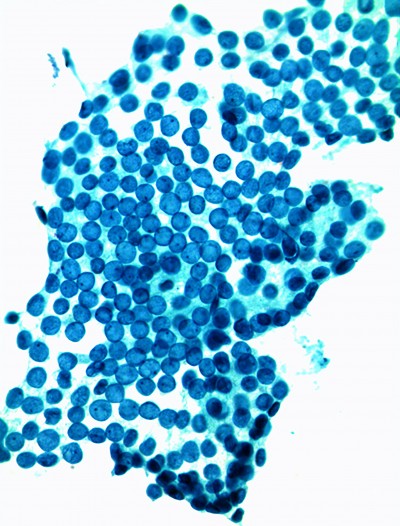News & Publications
Ask the Pathologist: Negative Pap but Positive HPV?
January 1, 2014
By David C. Hoak, MD
Dear Pathologist,
I have a 31-year-old female patient for whom I recently ordered co-testing for cervical cancer with a Pap test and an HPV test. The Pap test was negative, but the HPV test was positive. What does this mean?
—Concerned Provider
Dear Concerned Provider,
Yes, this does happen occasionally. As you are aware, certain types of human papillomavirus (HPV) act as the causative agents of cervical cancer. The HPV test detects the presence of HPV DNA or RNA. An HPV test is positive when there is infection present. HPV infections are common, and most HPV infections will clear in one to two years. A Pap test screens for cellular abnormalities caused by HPV. A negative Pap test means that no cellular abnormalities were identified under the microscope after both computer-guided screening and re-screening by trained cytotechnologists. Early infections or resolving infections with HPV may not reveal any cellular abnormalities.
The most common reason for a negative Pap test with a positive HPV result is that the patient has an HPV infection, but the infection is not causing any cellular abnormalities. Cellular abnormalities caused by HPV can be quite focal on the cervix, while the HPV infection can be more widespread. So another potential reason for a negative Pap with a positive HPV is that the focal area of cellular abnormality was not sampled by the Pap brush/mop collection device. Another possibility for a negative Pap test with a positive HPV test is that the focal area of cellular abnormality was sampled, but there were so few cells collected that the cells were not detected when screened by the computer and the cytotechnologist. This is called a false negative result.
At Incyte Diagnostics, we conducted a Quality Assurance Study and reviewed the Pap tests on 411 patients who had a negative Pap test with a positive HPV test. The original negative Pap test was confirmed in 98.6% of these cases, and a cellular abnormality was found in only 1.4% (6 patients). This data supports that most patients with a negative Pap and a positive HPV just have an HPV infection. Two years later, our follow up results on two of the six patients revealed no abnormalities.
How often does a Negative Pap and Positive HPV test occur?
At Incyte Diagnostics, this occurs in 4.1% of our patients, which compares very well to data documented in a recent study by Kaiser Permanente of Northern California revealing that a negative Pap and positive HPV result occurred in 4% of over 580,000 female Kaiser patients.
How should this patient be managed?
Since this patient is over 30 years-of-age, she could have another Pap test and HPV test in one year. The ASCCP guideline also recommends HPV 16/18 genotyping with this result combination when ordered as a co-test on a woman over 30 years-of-age. This HPV reflex genotyping can be performed up to 21 days after the Pap test is collected. If either genotyping is positive, colposcopy is recommended.

